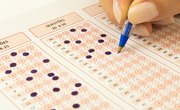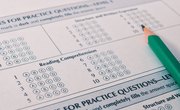Multiple choice tests are an inevitable part of life for every elementary school student. What some students may not realize, however, is that it is not always enough to know the subject matter. A student must also know how to take the test, as there are certain rules and strategies that will help achieve the best possible grade.
Study the material. There are no tips that will help you pass a test if you do not know the material. Be sure to study and pay attention in class, as this is the best way to ensure a good grade. Many elementary school teachers will give multiple choice math tests, so make sure you know how to solve the different types of math problems. For English, social studies or other types of tests, read the material to help you understand and prepare for the test.
Read the question thoroughly. Make sure you fully understand the question before you look at the possible answers. If this is a math test, try to solve the question on your own before looking at the answers.
Read all of the answer choices. Even if you believe you have found the correct answer, make sure you read all of the choices. Elementary teachers often include one or two choices that are partially right, but in order to receive points on the question, you need to find the one that is the most correct.
Rank each answer choice. Think of each option as a true or false question. You can immediately eliminate all the false options. If there are more than one possible true answers, you should choose the answer that is more correct than the others. This will likely be an option that fully answers the question.
Skip difficult questions and answer the easier ones first. Elementary teachers will tell you how much time you have so make sure you pay attention to the clock. If you are skipping a question, make sure you note which, if any, answers you have eliminated.
Use a series of techniques to give an educated guess on difficult questions. The best way to guess an answer is to eliminate as many wrong choices as possible. Certain clues could be hidden in the text, such as different negative words. For example, if one answer uses the word "always", and this doesn't seem to fit into the context of the question, eliminate this choice. Doing so will increase you odds of answering the question correctly.
Related Articles
References
Writer Bio
Jen has been a professional writer since 2002 in the education nonprofit industry. Her work has been featured in the New Jersey SEEDS Annual Report, as well as several Centenary College publications, including "Centenary in the News" and the "Trustee Times." In 2009, Jen earned a Master of Arts degree in leadership and public administration from Centenary College.











